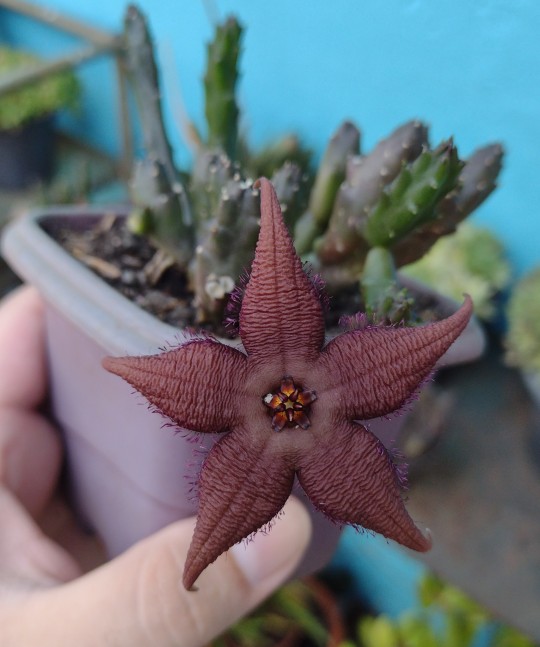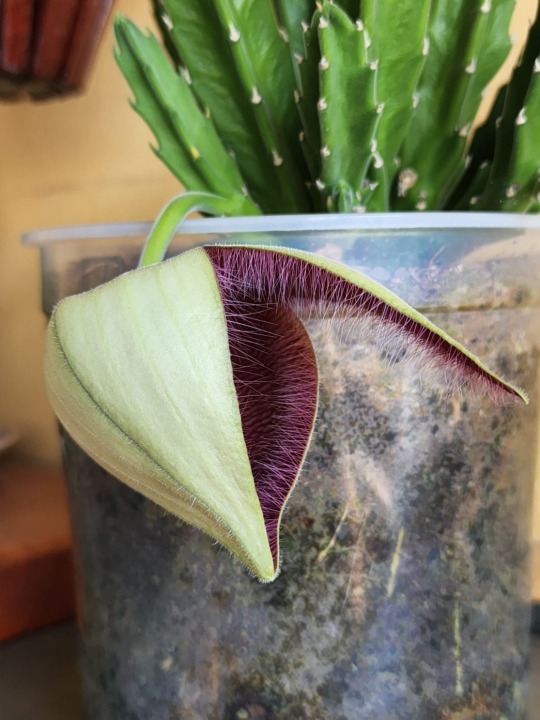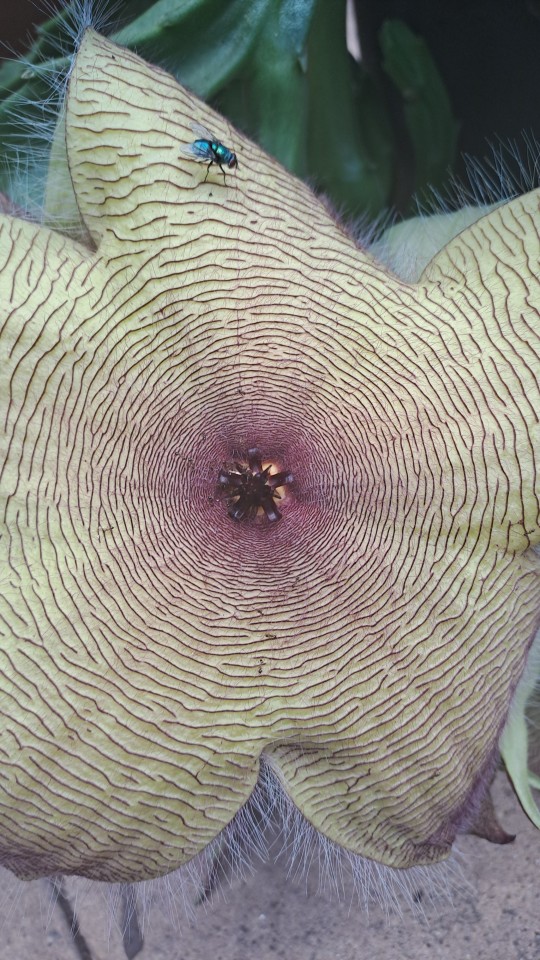#stapelia
Explore tagged Tumblr posts
Text


Stapelia gigantea
Stapelia is the genus that gives its name to the large assemblage of plants known as the stapeliads. Its succulent stems are pliable rather than rigid, and they look much like those found in related genera, except that they have a felted texture rather than being smooth. The flowers are very large (up to 10 inches across, or 25 cm), and the textured ridges on them, as well as the hairs and the foul smell, are features often seen in this group. The reason for the foul smell is to attract the flies that pollinate them. It is a very successful strategy, and this species often spreads spontaneously in gardens. It occurs naturally over a wide area in southern and eastern Africa.
-Brian
240 notes
·
View notes
Text

Echinocactus grusonii (Golden barrel cactus) & Stapelia, The Huntington, CA
#echinocactus grusonii#Stapelia#golden barrel cactus#the Huntington#botanic garden#cactus#California
54 notes
·
View notes
Text



Stapelia gigantea is a species of flowering plant in the genus Stapelia of the family Apocynaceae. Common names include Zulu giant, carrion plant and toad plant (although the nickname "carrion plant" can also refer to Stapelia grandiflora). The plant is native to the desert regions of South Africa to Tanzania.
Growing up to 20 cm (8 in) tall, it is a clump-forming succulent with erect green stems 3 cm (1.2 in) thick. The blooms are large star-shaped five-petalled flowers up to 25 cm (9.8 in) in diameter. The flowers are red and yellow, wrinkled, with a silky texture and fringed with hairs, that can be as long as 8 mm (0.3 in). They bloom in autumn, triggered by the shorter daylight hours.
The flowers have the smell of rotting flesh, in order to attract the flies which pollinate them. [...] There have been several proposed reasons for the size of the flowers of S. gigantea. First, it is possible that they are large to attract the flies that pollinate them. The large size and color of the flowers combined with the carrion smell may cause the flies to behave as if it is a dead carcass and be more likely to visit it
[Video & Text]
#botany#plants#houseplants#stapelia gigantea#stapelia#plantblr#*gfx#*botany#here it comes!#no coloring just sharpening#why this plant first?#because i always wanted one#and just ordered one yesterday 👀#botanyedit
55 notes
·
View notes
Text

my crop
19 notes
·
View notes
Text


Went to the cactus and succulent society’s annual Volunteer Park Conservatory sale and got myself some new friends! I got sea plantains (Plantago maritima), Lewisia columbiana, Gonialoe variegata (my friend sold me this! I have this species but one isn’t looking too good and I want a breeding pair), and some free Stapelia grandiflora cuttings!
I donated one of them to Chocolati and told the staff that its name is Spubsy and it will be their new coworker to replace the deceased Fatsia japonica that was formerly in that pot.
28 notes
·
View notes
Text

✨ New baby ✨
✨ Stapelia schinzii var angolensis ✨
#stapelia#Stapelia schinzii var angolensis#stinky flower#flower#plantas#plants#gardeners on tumblr#succulents#suculentas#plantblr#my plants#picoftheday#succulent blog#brasil#flor
48 notes
·
View notes
Text



Stapelia grandiflora
Belo Horizonte/Minas Gerais/ Brasil
fotos: Gelasbr
16 notes
·
View notes
Text





Avec Christine, on a fêté nos 40 ans d'amitié en faisant un voyage de 15 jours en Sicile. Cette fois, on se base à la périphérie de Modica, à la Antica Masseria Timparuci.
Le jardin est une merveille avec ici, une Aristoloche élégante, une Orbea variegata, un Vanillier de Cayenne...et des fourmis, un iule...
#sicile#itaie#modica#antica masseria timparuci#botanique#vanillier#vanillier de cayenne#orbea#orbea variegata#stapelia#stapelia variegata#aristoloche#fourmi#insecte#entomologie#iule#myriapode
4 notes
·
View notes
Text

Me: I refuse to get a Hoya, their flowers stink.
Also me: *gets a Stapelia*
2 notes
·
View notes
Text

(by Valeria Boltneva)
9 notes
·
View notes
Text

2 notes
·
View notes
Text


Stapelia hirsuta
Flowers of stapelias and their relatives can seem like something an evil sorcerer might have dreamed up. This one looks like it is made of leather, with a fringe of long hairs and a foul smell to go with it. The reason for the foul smell is to attract flies, which are its pollinators. Stapelia hirsuta is a variable species, and the plant shown is a form from Genadendal, South Africa, in the Riviersonderend Valley to the east of Cape Town. Stapelias are related to the milkweeds, and now placed in the subfamily Asclepiadoideae within the family Apocynaceae (previously, the Asclepiadaceae was treated as a separate family).
-Brian
45 notes
·
View notes
Text

The Huntington: Mammillaria, Stapelia and Echinocactus ingens
12 notes
·
View notes
Text


I usually don't allow stapelia to bloom, but eh, it can have one as a treat. Limifolia is sending out a flowerstalk again after randomly blooming back in february.
And then there's a spider mite invasion in the next room.
0 notes
Text



stacked stapelias.. the flies fucking love them!!
5 notes
·
View notes
Text

The Adenium is flowering! Since I already have another of the same color I put this for sale at Chocolati Greenwood for $22 if anyone wants it! I believe these are about six years old from seed now?
Here are my other current offerings, as I have just restocked! Mostly it’s Sinningias, but I have Stapeliad cuttings and carnivores as well.


I am out of art prints for now, but I just ordered more Furbies! They should be here later this week.

8 notes
·
View notes